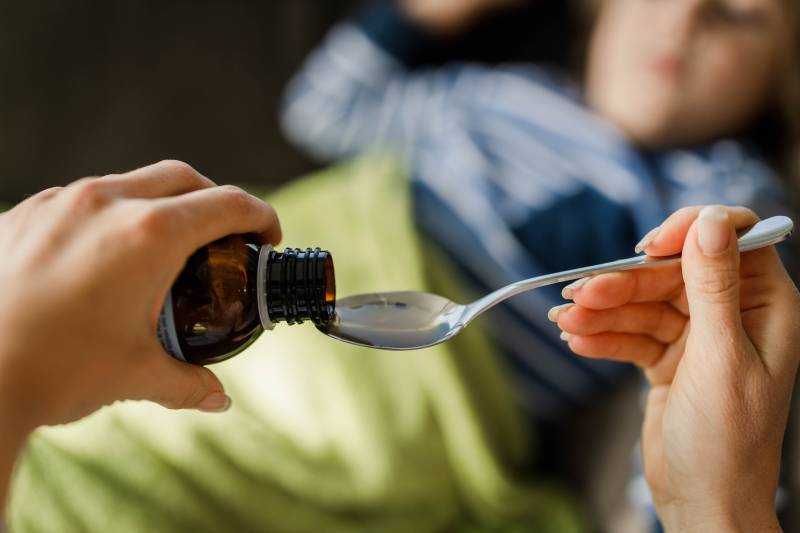While there may not be a countrywide shortage, there is one part of the U.S. where finding these meds is most difficult: areas near the Canadian border. The Buffalo-Rochester area of western New York is seeing the highest demand in the U.S., CHPA says.
Sales for such products in the Buffalo-Rochester market surged 53% in October compared to a year earlier. That’s very likely the result of an ongoing shortage of kids’ pain and fever medications in Canada, with Buffalo’s close proximity to Toronto making it an ideal place for Canadians to buy such products in the U.S.
A spot check on Thursday in Washington, D.C., of four stores — a Giant supermarket, a CVS, a Target, and a Bed Bath & Beyond — found low supplies of children’s fever-reducers, though each had at least a few of such medicines available. Supplies were low of cold and flu products for adults, as well.
“The supply chain is strong,” says Anita Brikman, a spokesperson for CHPA. But parents and caregivers may need to check more than one store, buy a store brand instead of a name brand, or order products online, she suggests.
Parents have a range of options for treating fevers
So what to do if you have a fevered child, and are struggling to find Children’s Tylenol or a similar product?
There’s a good chance you don’t even need to use medicine, says Dr. Sean O’Leary, a professor of pediatrics at the University of Colorado School of Medicine and Children’s Hospital Colorado, as well as the chair of the Committee on Infectious Diseases for the American Academy of Pediatrics (AAP).
“These medicines are not curative. They don’t alter the duration of the illness or anything like that. They are essentially purely for comfort,” he tells NPR. “Fevers from common respiratory viruses in and of themselves are not harmful.”
He offers a scenario. “If [a child’s] temp is 103, but he’s running around the room having a good time playing, you don’t need to do anything with that. That’s not going to hurt him. Fever is representing our body’s immune response to an infection. On the other hand, if he doesn’t have a fever, but his throat is hurting, something is bothering him, he’s pretty fussy — then that’s where things like ibuprofen or Tylenol, acetaminophen can be helpful.”
AAP has guidance on treating a child’s fever, as well advice on treating a fever without medicine.
Often when kids do have a fever, they do feel pretty crummy, and so that’s a time to use such medicines — “It’s to treat how the child is feeling,” O’Leary says.
Fever is a more serious concern in infants and children who experience febrile seizures.
“Fever in very young infants, in newborns, is actually a different situation, and that’s something that does need evaluation,” O’Leary says. “Essentially, the younger the child, the more concerned you should be about a fever. For example, a 2-week-old with a fever is something that needs immediate medical attention. A 6-month-old with a fever that’s otherwise doing well does not need immediate medical attention. [Parents] can simply call their child’s pediatrician to get that checked out.”
Be very careful with adapting adult medications
Parents at home might be eyeing their bottle of adult acetaminophen or ibuprofen and wondering if they could give a smaller amount to their sick child. But there’s reason to be very cautious with that — and to consult a doctor or pharmacist first to find out the correct dosage for your particular child.
“For both acetaminophen and ibuprofen, there are potential toxicities from taking too much — some of which can be quite severe, particularly for acetaminophen. So you really have to be careful when you do that,” O’Leary says.
